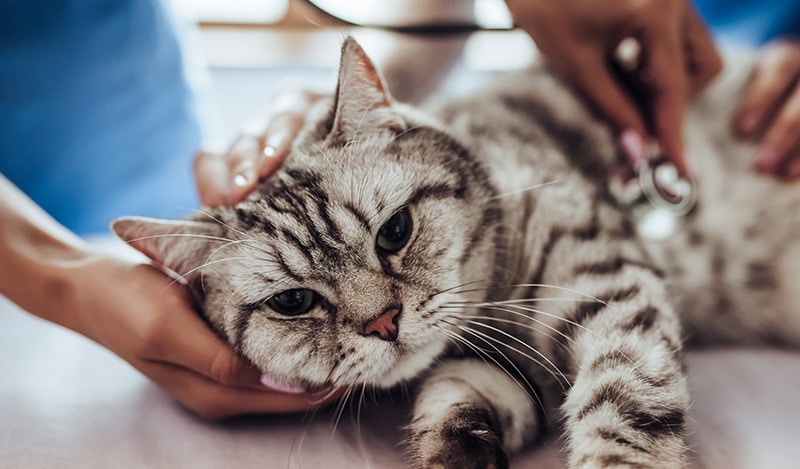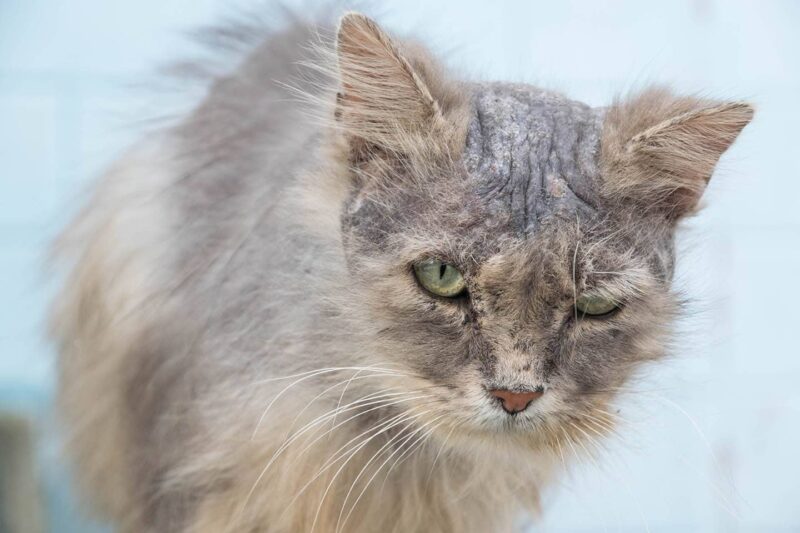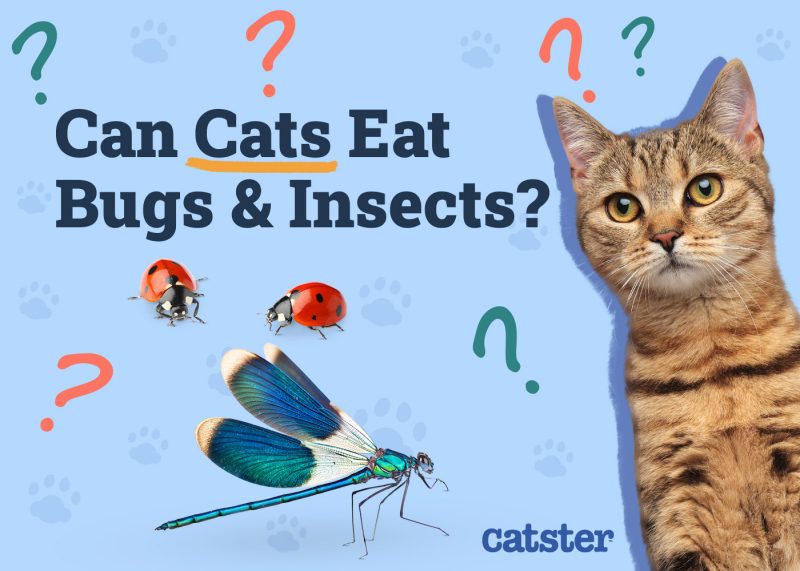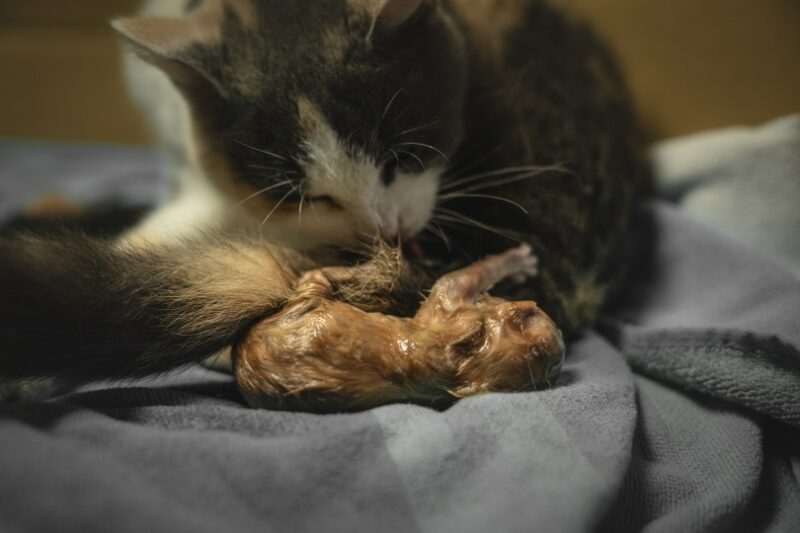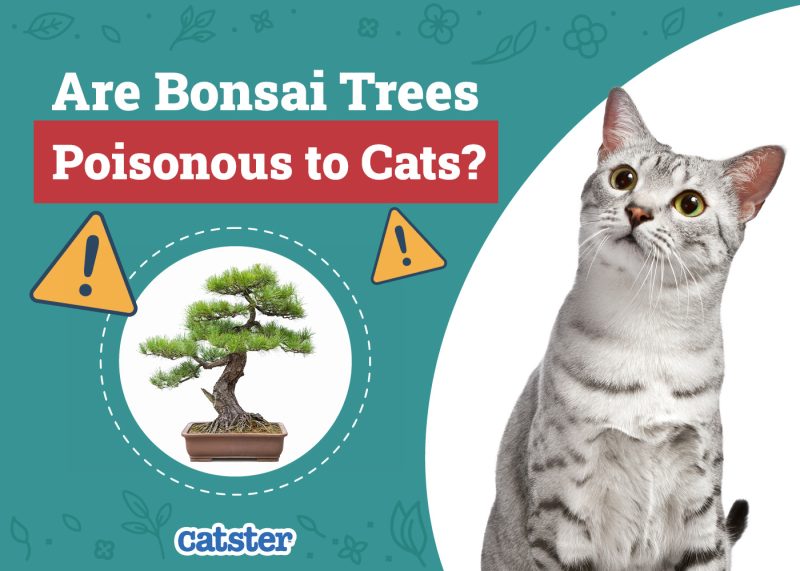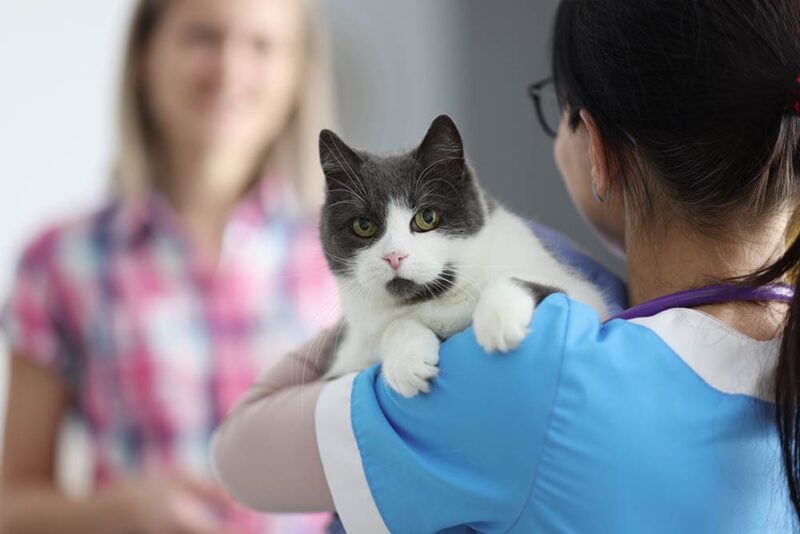In this article
View 4 More +So, your cat had some catnip and is now acting weird. Should you be worried? Well, you’re in luck because in most cases, you don’t need to worry! Catnip isn’t an addictive substance. However, some cats may be allergic to catnip (Nepeta cataria), as the physiological possibility of allergy exists with all plants.
It might be difficult to pinpoint a true allergy to catnip because catnip is actually toxic for cats 1. Other theories suggest that cats have evolved to use plants containing nepetalactone (the “high-inducing” compound), and therefore, wouldn’t be allergic to the plants.
Cats can have too much catnip and experience adverse reactions like vomiting and diarrhea. This can be from eating or sniffing the plant, as the toxic principle is from the attractant in the plant. Even so, there’s no need to imagine the worst of the worst, and here’s why.

Catnip 101
Catnip (Nepeta cataria) belongs to the mint family (Lamiaceae), which includes spearmint, peppermint, sage, lemon balm, etc. These plants are known for their highly aromatic leaves, stems, and flowers. Volatile oils give these plants their scent and protect them from harmful insects and diseases. It is also why bugs often don’t care for peppermint or spearmint.
Nepetalactone, one of catnip’s volatile oils, binds to receptors in the cat’s nose, which triggers the “happy” neurons in the brain and makes your kitty feel marvelous for about 10 minutes. Even wild cats like lions enjoy the effects of nepetalactone.
After the euphoric experience, your cat will likely fall into a state of relaxation for 2 to 3 hours. This is also known as an obligatory fatigue period; during this time, your cat will not respond to more catnip.
Cats can experience a mellow high if they eat the plant and a more erratic experience when offered a more concentrated version like catnip oil. It all boils down to how much catnip you offer your cat.
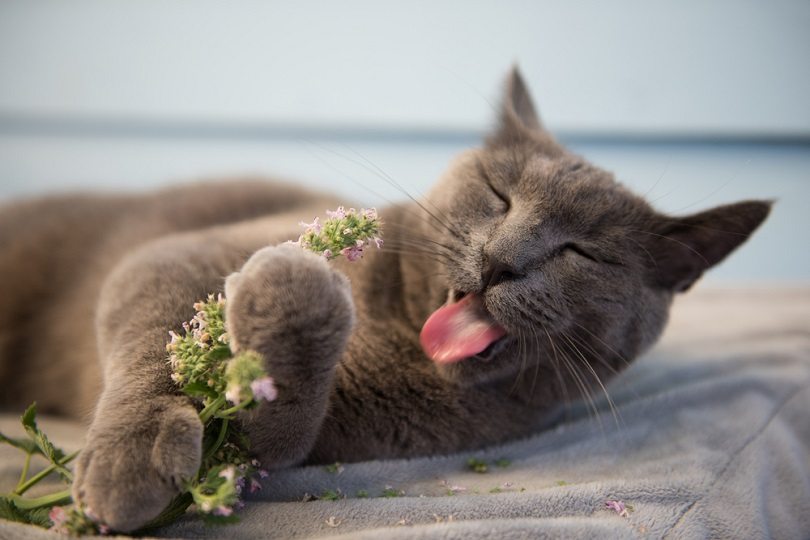
The Case Against Allergy
Though catnip is a toxin when consumed in high amounts by a cat, it isn’t a well-documented allergen for them. Its mention as an allergen in the medical literature is practically non-existent, and all evidence of a potential allergy is supported based on its theoretical possibility but not its documentation.
Though catnip is toxic and, therefore, might be challenging to diagnose as an allergen, another theory exists that cats have evolved to respond to plants that contain nepetalactone by licking them and rubbing them on their fur. This would, in turn, prevent the cats from some disease-causing insects because the compound’s natural role in the plant is to act as an insect repellent.
Cats also often hunt their prey by stalking them. This requires being slow and patient, which would allow insects to bite the cats more easily. This further reinforces the idea that cats are drawn to catnip to fulfill the evolutionary need to be able to find a way to handle insects better to increase their odds of success in hunts. To date, research2 has found that this remains the most compelling reason as to why it’s very hard to find a cat with a true allergy to catnip.
How Much Catnip Is Too Much?
There isn’t an exact measurement for offering catnip to your kitty. Still, cats don’t need much to experience the sensational feeling, as catnip isn’t addictive. Therefore, repeated exposure to the same amount of catnip can produce the same effect in your cat.
Fresh catnip is more potent than dried catnip, so only a few leaves or a couple of clippings will do. You can sprinkle a little dried catnip at a time to see how your cat reacts and make adjustments based on your observations.
If you’re wondering why your cat is vomiting, not walking properly, or having diarrhea, they’ve probably consumed too much catnip. This can happen when your cat has free access to the live plant, or you use a product with high potencies, like catnip oil.
All you can do is give your cat time. Eventually, the signs should subside. However, never hesitate to call your veterinarian. It’s best to be safe rather than sorry. It’s rare for cats to ingest enough catnip to develop adverse reactions. If this does seem to be the case with your cat, then it might be best to discuss this with your veterinarian.
If you need to speak with a vet but can't get to one, head over to PangoVet. It's an online service where you can talk to a vet online and get the advice you need for your pet — all at an affordable price!

Does Catnip Affect All Cats?
Not all cats become bumbling buffoons with catnip. Only 50% to 70% of cats feel anything at all. Scientists believe this is because of genetics. If a cat responds to catnip, their offspring will likely react to the plant (depending, of course, on the genetics of the cat they mate with).
Age also plays a part. Kittens don’t develop a sensitivity to the nepetalactone until they reach 6 months to 1 year old.
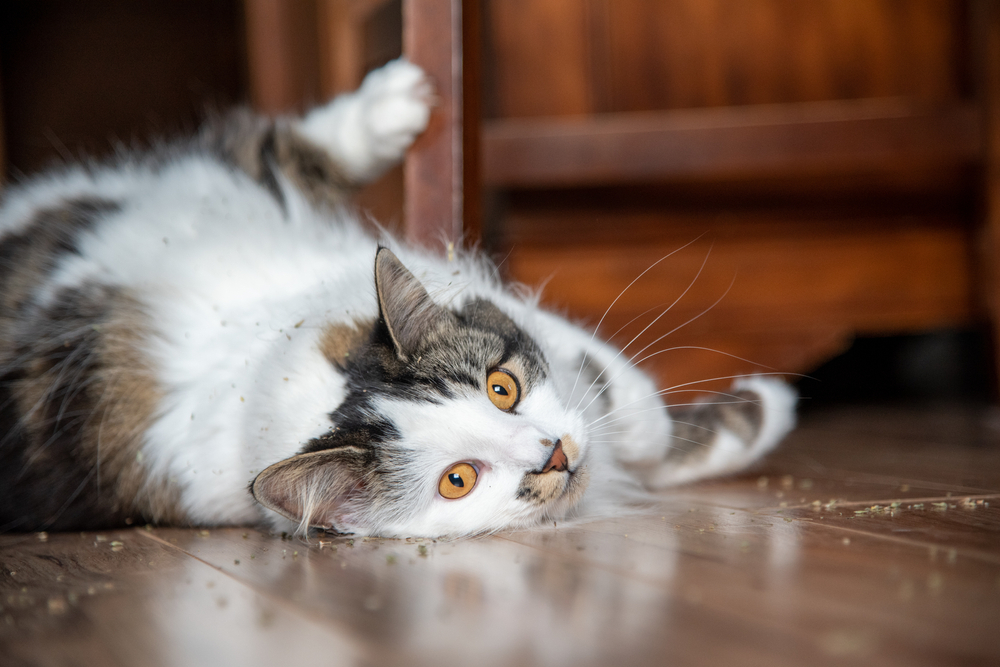
What Can I Use Instead of Catnip?
Cats are nutty when affected by catnip. If the catnip high freaks you out a little, we don’t blame you. Other options don’t have as strong of an effect. You can also try these herbs if your cat doesn’t respond to catnip:
- Silvervine: Silvervine (Actinidia polygama) is a member of the kiwi family and can even help repel insects. The high is similar to catnip, lasting up to 30 minutes. The high may even be more intense than catnip, though.
- Tatarian Honeysuckle: Tatarian Honeysuckle (Lonicera tatarica) was brought to the US in the 1700s from eastern Asia. A study showed that cats responded so well to Tatarian Honeysuckle that some cats even preferred it more than catnip. However, some states don’t allow the selling or distribution of the plant because it’s invasive.
- Valerian: Valerian (Valeriana officinalis) is another herb native to Europe and Asia and has been used as a sedative for thousands of years. A study showed that out of 100 cats, 50% were affected by valerian. The effect was a nice high, followed by sleepiness.
 Conclusion
Conclusion
You do not need to worry about your cat being allergic to catnip. However, you should monitor how much catnip your cat enjoys. It’s a fun plant for everyone involved, but too much of a good thing is always bad. Practice moderation and avoid high-potency products like catnip oil, and your cat should be fine.
Featured Image Credit: Gaston Cerliani, Shutterstock



